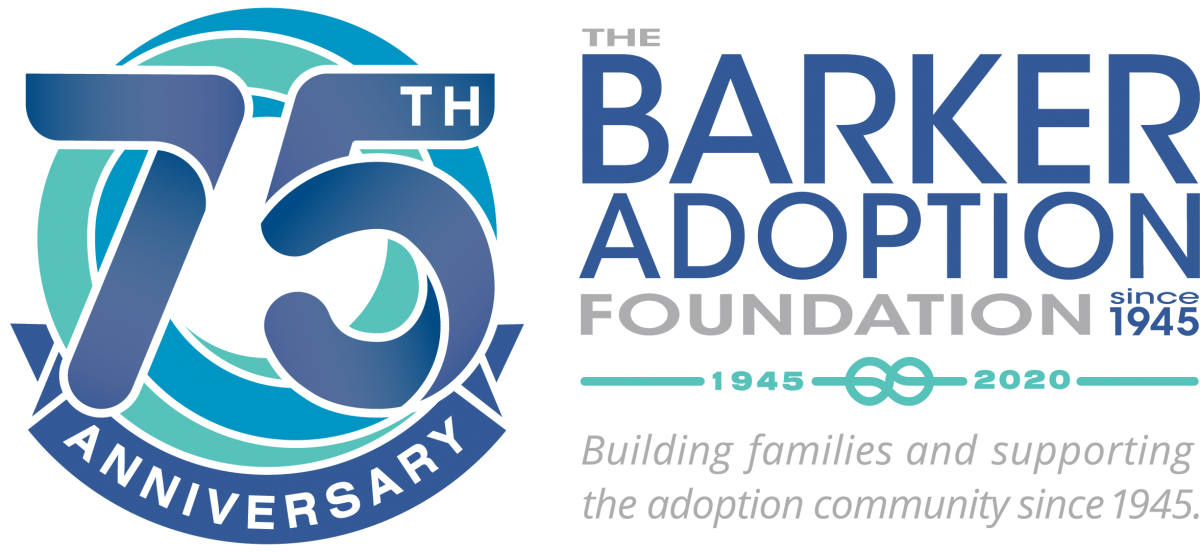Celebrating Barker’s 75th Year | Where It All Began
Celebrating Barker’s 75th Year | Where It All Began
The Barker Adoption Foundation has a proud history. Adoption and the adoption field have evolved in positive directions as society’s norms have shifted. Over the years Barker has helped lead changes in practices and policies that have brought better support to and respect for adoptees, adoptive families, and birth parents.
Adoptions change history, and that was true of Richard and Ruth Barker’s adoption of two children in 1937 and 1940. By 1945 the couple were living in Washington, D.C., where Richard was a successful tax attorney and Ruth a psychologist.
The couple’s adoption experiences led them to a decision that would forever change their lives and those of thousands of others. At the time infants were often kept in foster care for months or years to assess their adoption “fitness.” The Barkers believed differently: a baby, they thought, should be placed in an adoptive home as soon after birth as possible, preferably at one month of age. So in 1945, they got licensed to place children for adoption themselves.
That year came a request from the U.S. Navy. During World War II that service had begun recruiting women into a newly created reserve force: Women Accepted for Volunteer Emergency Service, or WAVES. The Navy contacted the Barkers to ask their help in addressing the needs of WAVES who had become pregnant.
So in that same year of 1945, the Barkers launched their own adoption agency.
From the beginning, they felt strongly about parent participation, and the agency became the nation’s first parent-run adoption cooperative. Parent committees transported babies, interviewed and housed birth mothers, and interviewed prospective adoptive parents, all overseen by caseworker supervisor Gladys Schubert. There were no fees, only donations in those first years.
The Barkers operated out of their home in the Westmoreland Hills section of Bethesda, and birth mothers lived there during their pregnancies. Later they set up a Bethesda office. The Barker Foundation incorporated as a nonprofit in 1951, and a Board of Trustees was formed.
From the beginning the agency fought for better adoption practices: placing children as soon after birth as possible, providing care for birth mothers, involving birth fathers, sharing background information with adoptive parents. Annual Dinners began; in 1954 the entertainment was a barbershop quartet.
It was a world-changing start. Since launching Barker has placed more than 8000 children with forever families and provided counseling and related support services to close to 30,000 parents who are considering placing a child for adoption. And the Barker community remains unique in its level of passionate involvement with the agency.
This year we’re taking you on a trip that revisits where Barker has come from, looks at where we are now, and projects where we’re going. Each month we’ll recount significant periods in Barker’s history, discuss what they meant in terms of new programming or approach, and reflect on what they mean moving forward.
We’re also kicking off 2020 with our brand-new 75th anniversary logo. It was designed pro bono by the marketing firm Arachnid Works, where Barker parents Monica and Brian Kolbay are president/CEO and chief technical officer/senior web developer, respectively.

The new logo is intended to illustrate several ideas at the core of our work. The interconnected circles convey the support surrounding each person involved in a Barker adoption. They’re also a cord depicting continuity: the life cycle of the adoption process, our involvement with families over time, and Barker’s long history. The color scheme is consistent with Barker’s existing brand but also alludes to the diverse threads that make up the larger, inclusive Barker family.
We’d love to hear your stories about Barker’s history. If you’d like to share one with us, please contact Michele Mazzei at mmazzei@barkerfoundation.org
Come with us this anniversary year as we tell the story of where Barker has been and where we are going.

